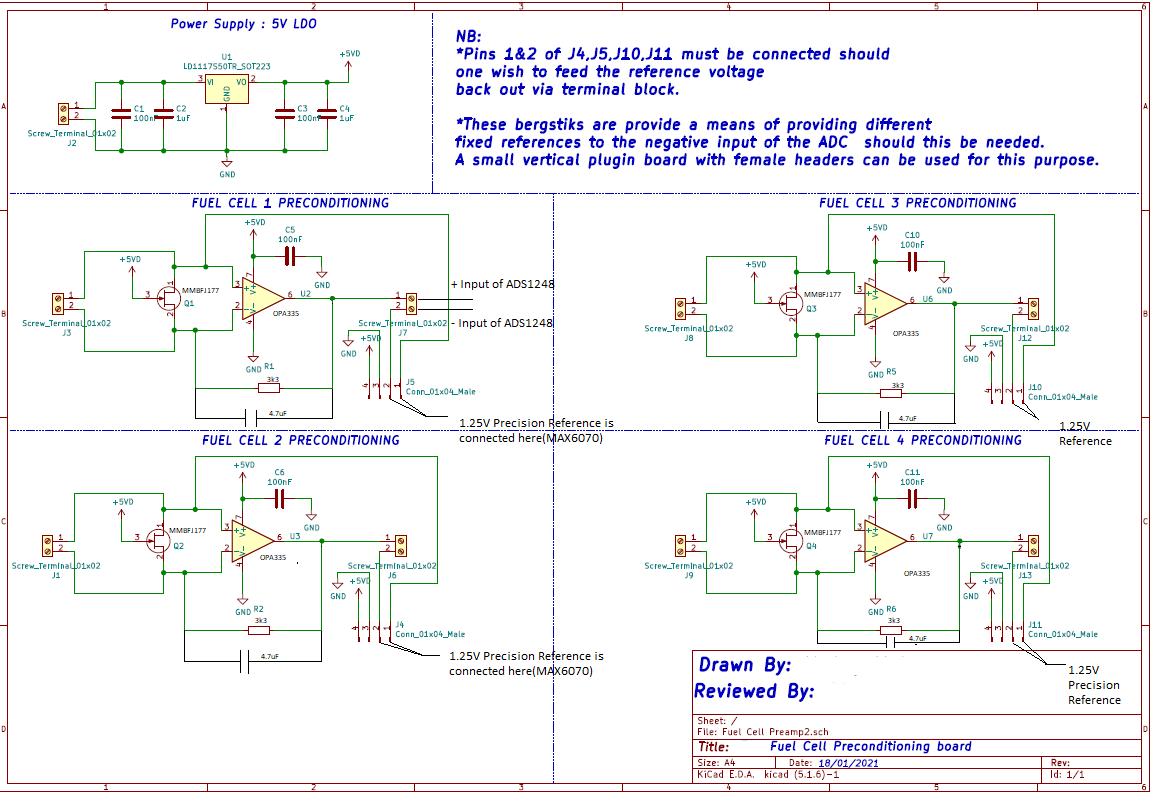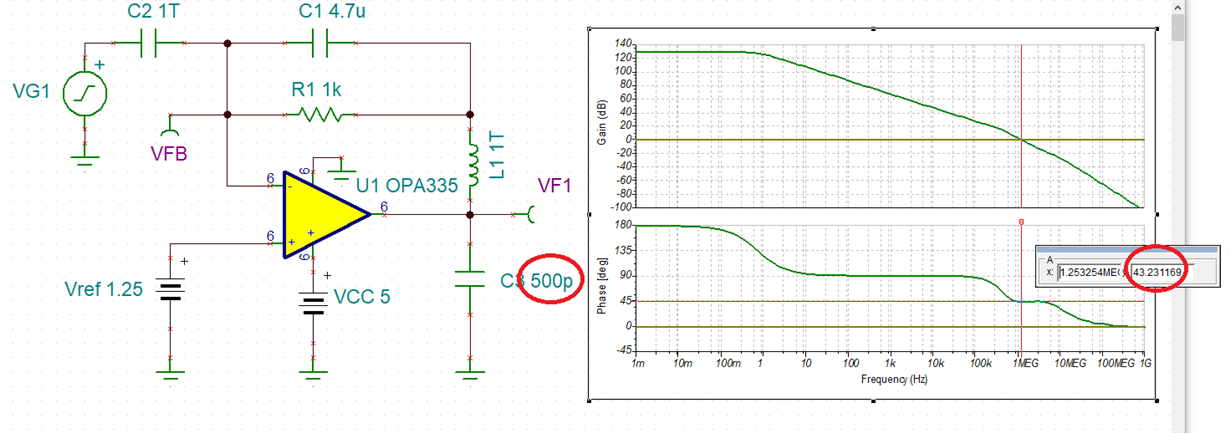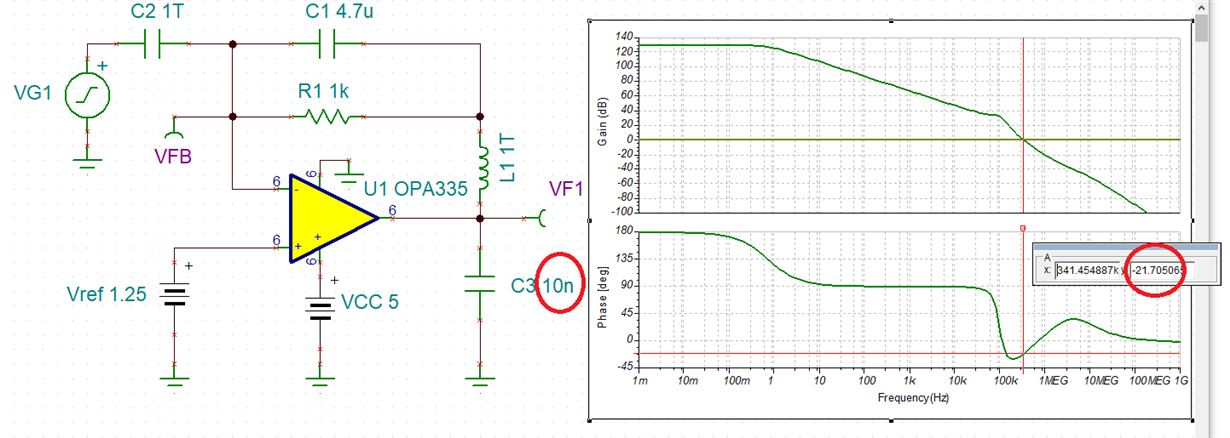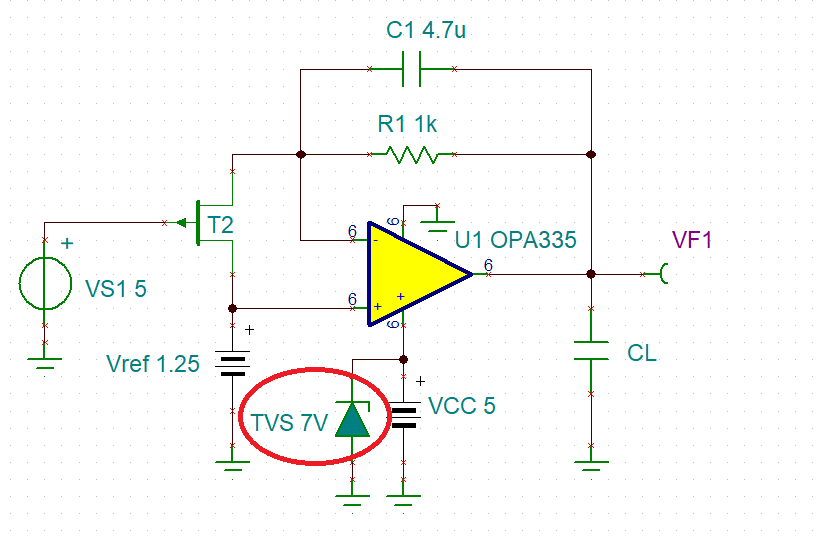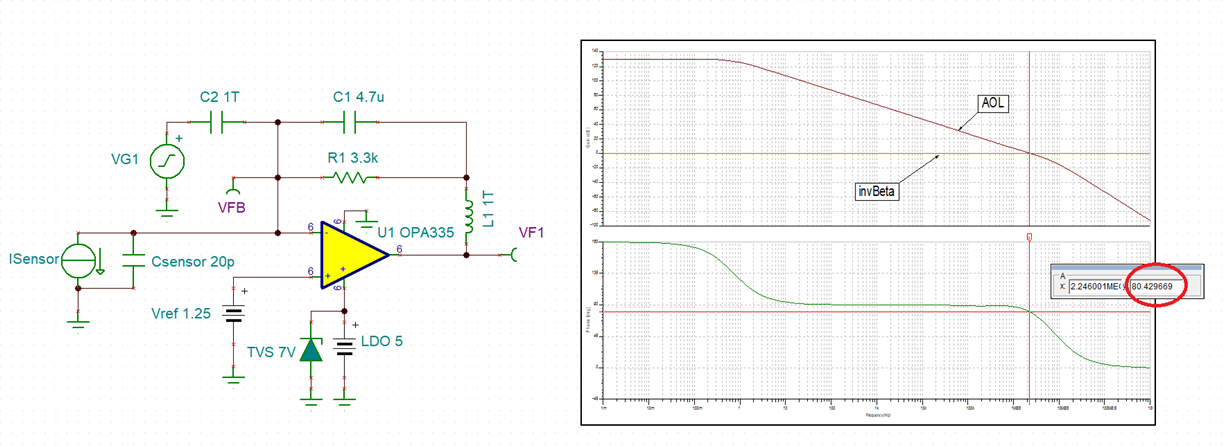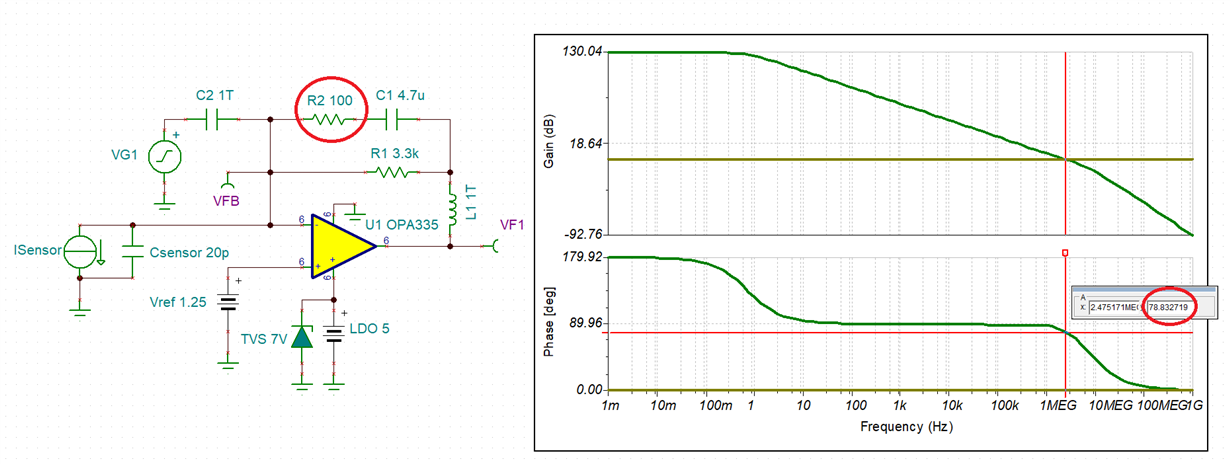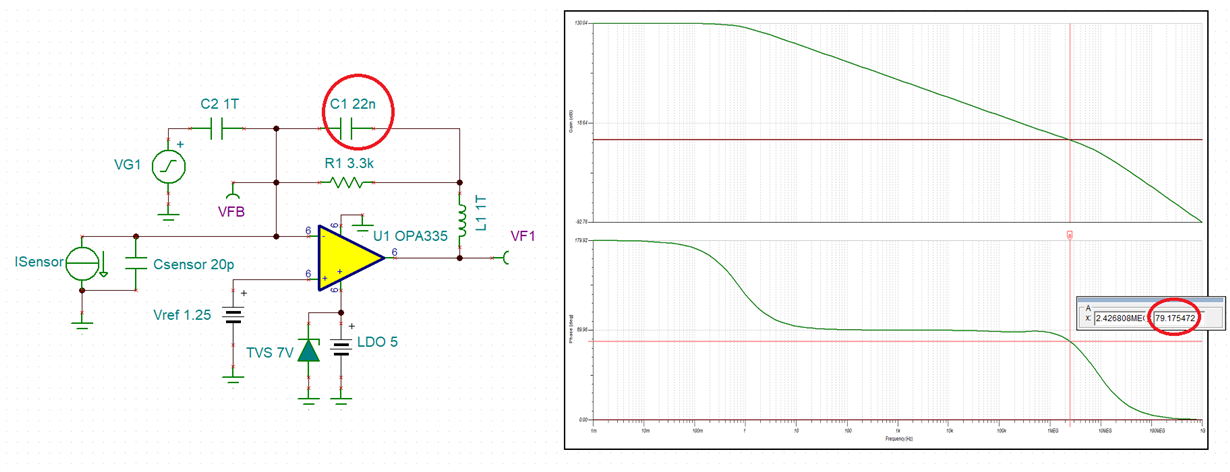Other Parts Discussed in Thread: ADS1248, TINA-TI
Hi Guys,
I have a peculiar issue I'm experiencing with a transimpedance amplifier circuit designed using an OPA335.The schematic is attached below,I have annotated it where possible to make the problem easier to digest.
The above circuit is being used as a transimpedance amplifier with a gain of 3300 set by the 3k3 resistor.The 4.7uF capacitor functions as a stabilization/feedback capacitor.The positive input of all the op-amps above share a common reference voltage i.e. a single MAX6070 IC provides a 1.25v reference for all 4 op-amps.The output of each of the op-amps is then fed to into 8 differential inputs of an ADS1248 ADC along with the 1.25v reference i.e. Output of op-amp to + differential input and 1.25v to negative differential input of ADS1248.
The above circuit is being used to amplify the signal generated by an electrochemical sensor used to measure breath alcohol levels.The sensor is connected across the MMBFJ177 JFETS,this is used to provide a virtual ground to allow the sensor to discharge when not in use.
After a few days of operation the OPA335 devices start failing,i.e. drawing current even when not in use and pulling the reference voltage down to 0.8v from 1.25v.I notice that after the fault occurs the OPA335 ICs show a low-impedance between Supply and GND pins.The same mode of failure has occured on 4 different PCBs.The 5v LDO on the schematic is powered from a regulated 12v supply.
Any assistance and general design advice/improvements to the above circuit would be greatly appreciated.
Kind Regards,


